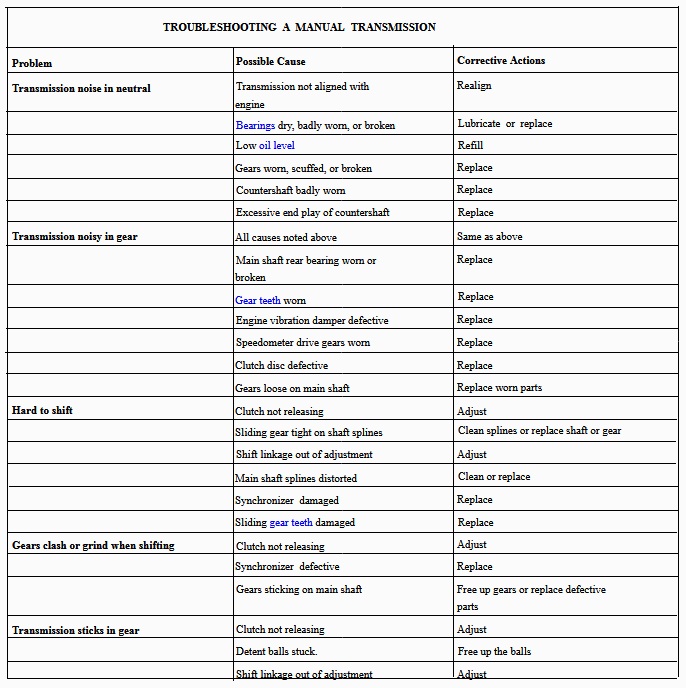of gears may not seem significant at the time, but each time this occurs, small particles of the gears will be ground off and carried with the lubricate through the transmission. These small metal particles may become embedded in the soft metal used in synchronizers, reducing the frictional quality of the clutch. At the same time, these particles damage the bearings and their races by causing pitting, rough movement, and noise. Soon transmission failure will result. When this happens, you will have to remove the transmission and replace either damaged parts or the transmission unit.
As a mechanic, the first step toward repairing a transmission is the diagnosis of the problem. To begin diagnosis, gather as much information as possible. Determine in which gears the transmission acts up - first, second, third, fourth, or in all forward gears when shifting. Does it happen at specific speeds? This information will assist you in determining which parts are faulty. Refer to a diagnosis chart in the manufacturer's service manual when a problem is difficult to locate. It will be written for the exact type of transmission.

